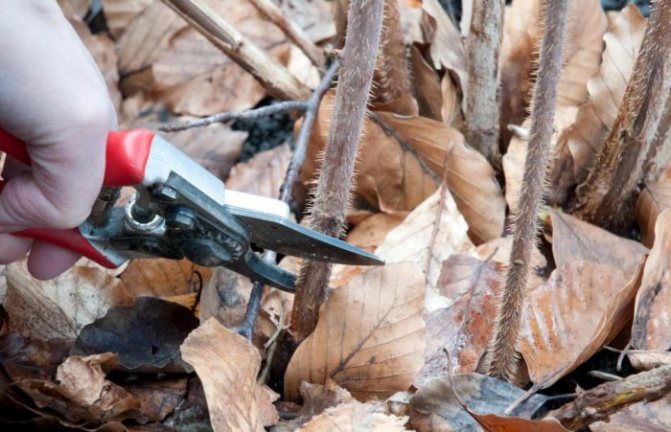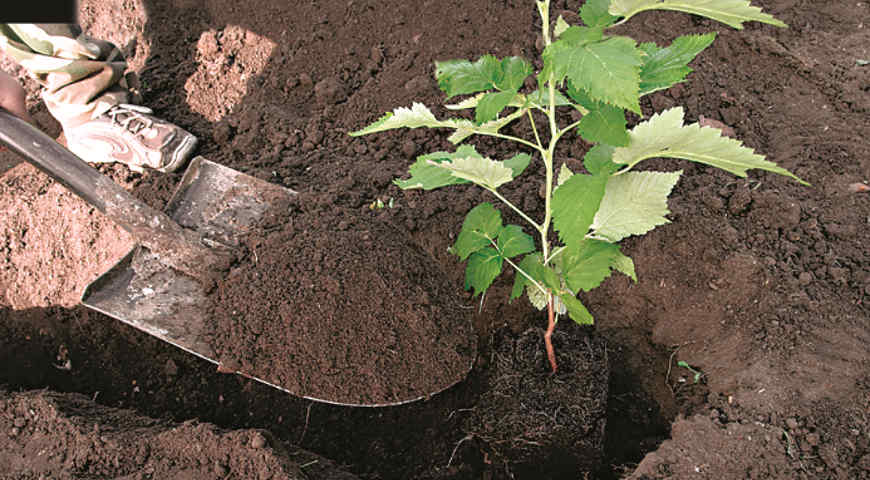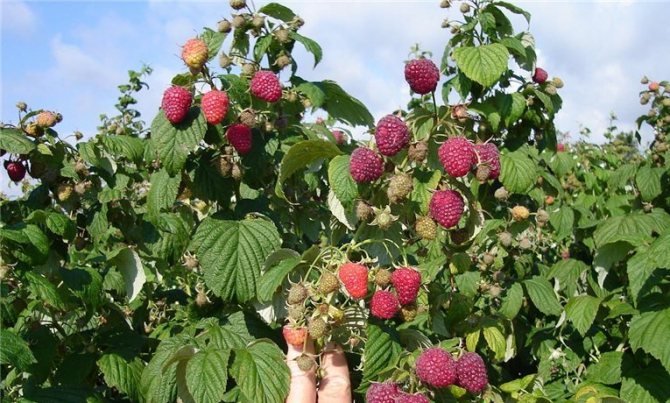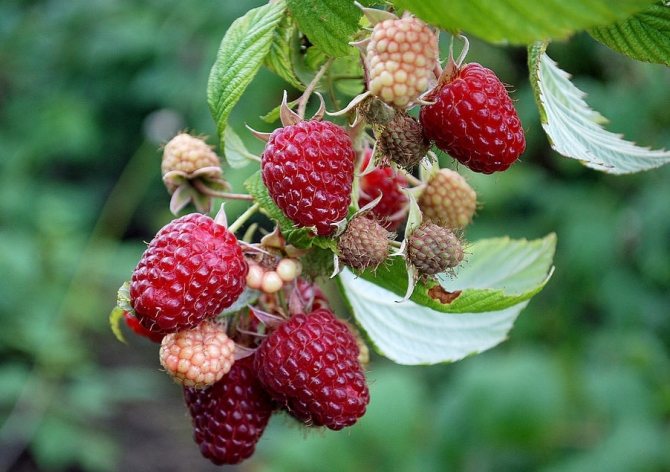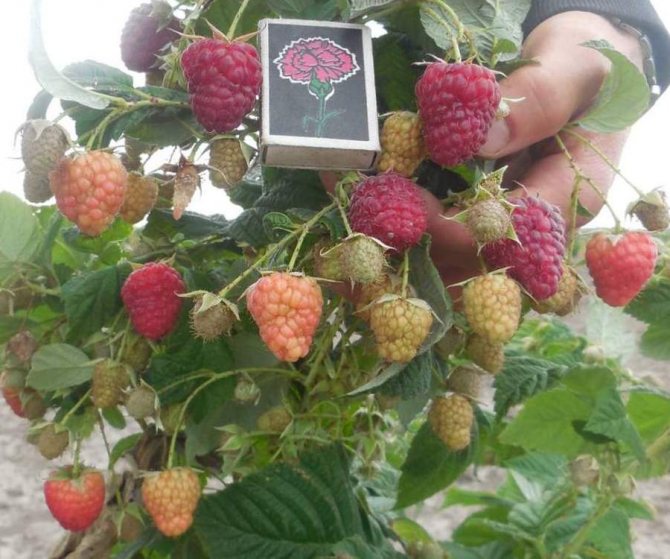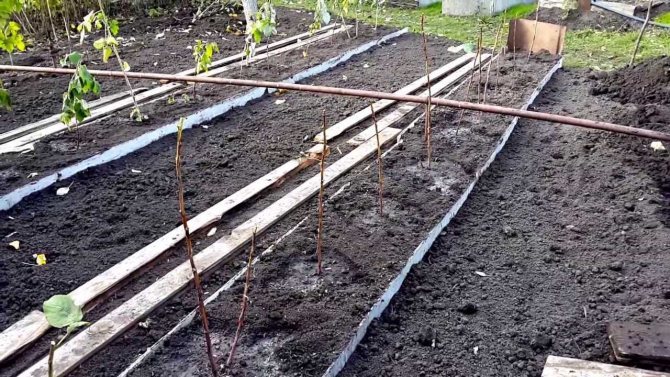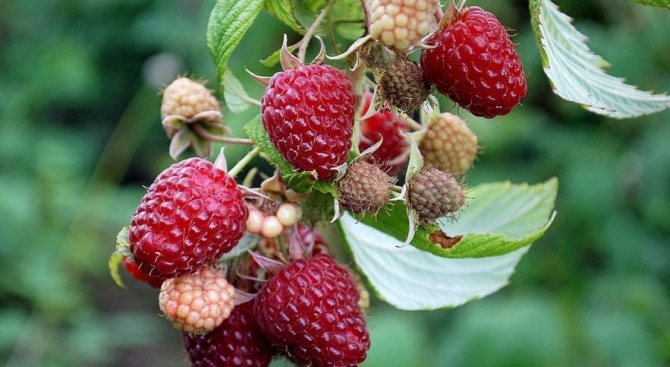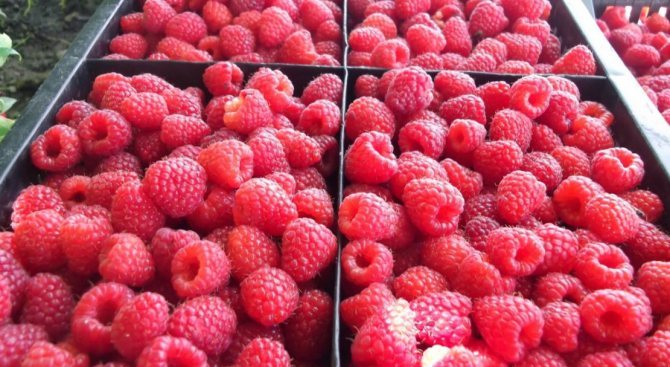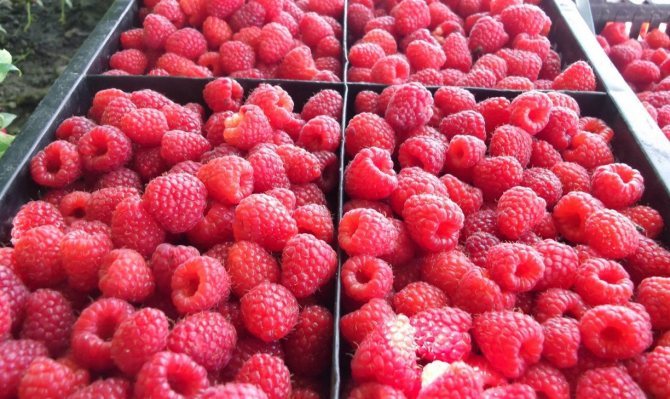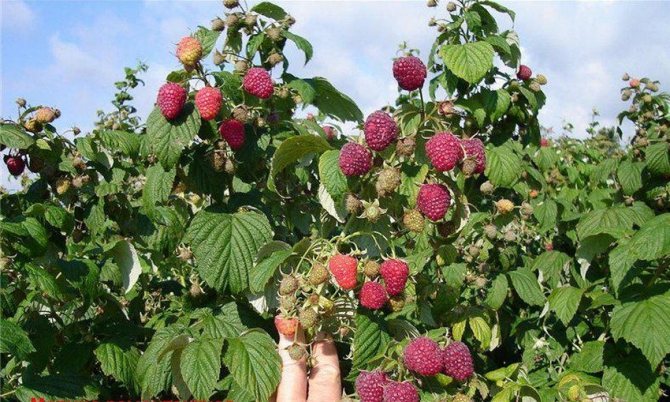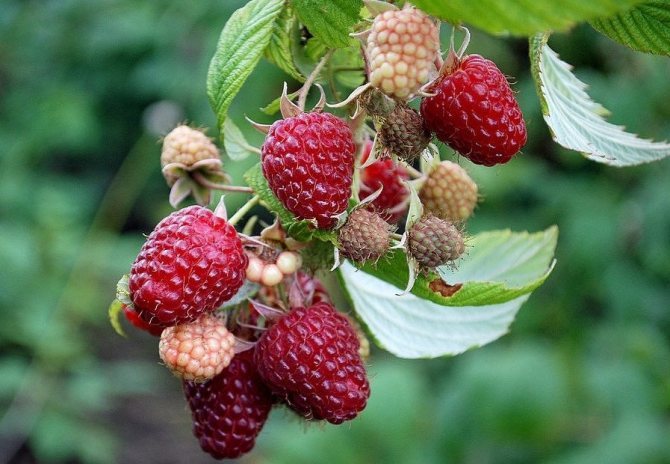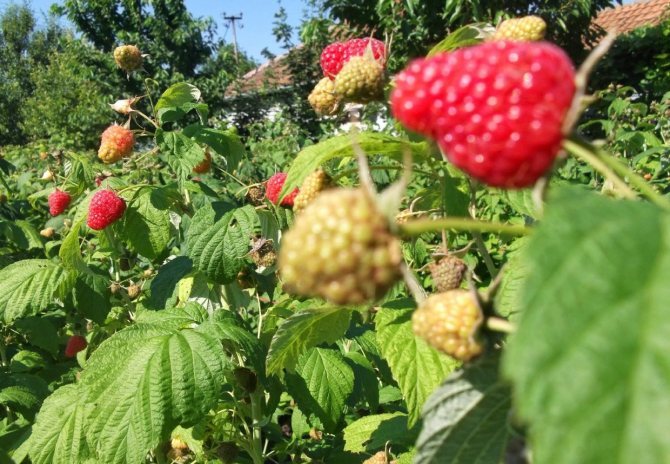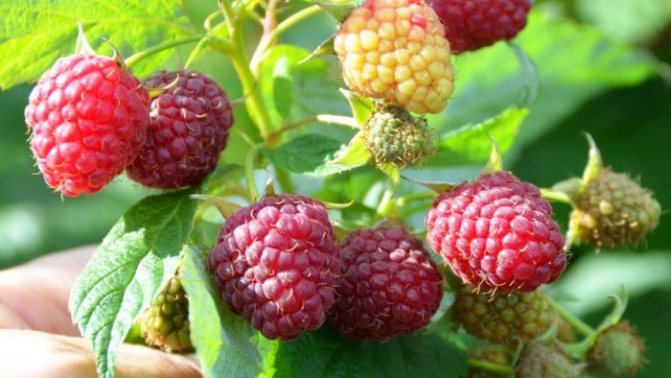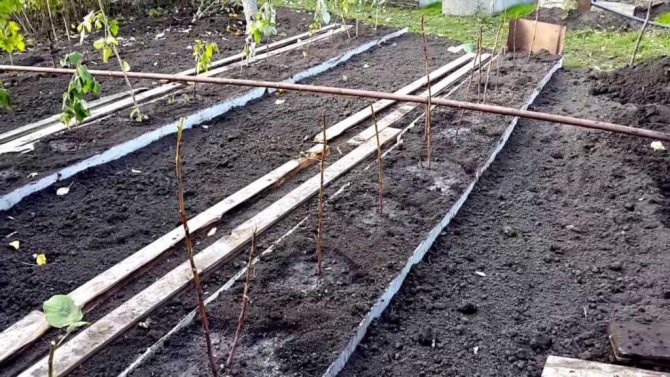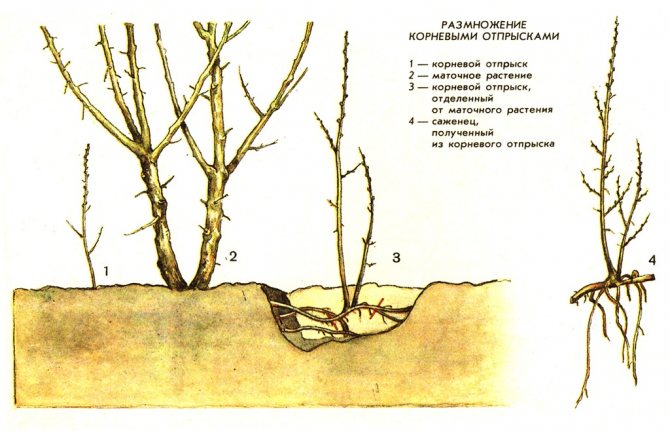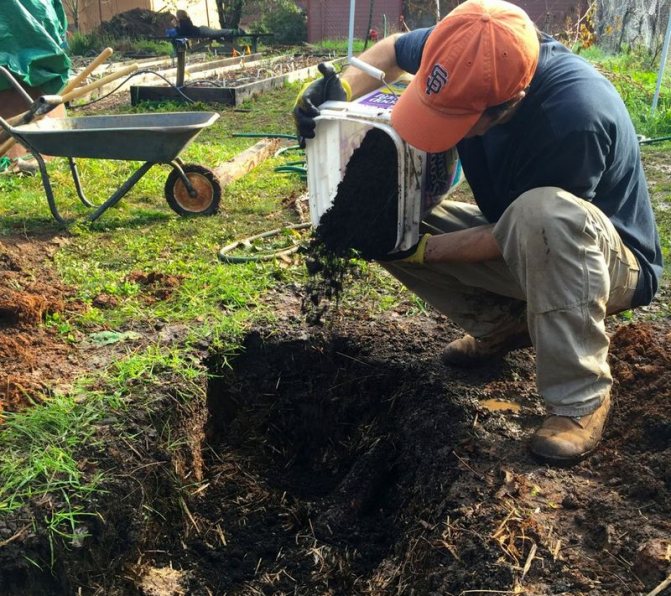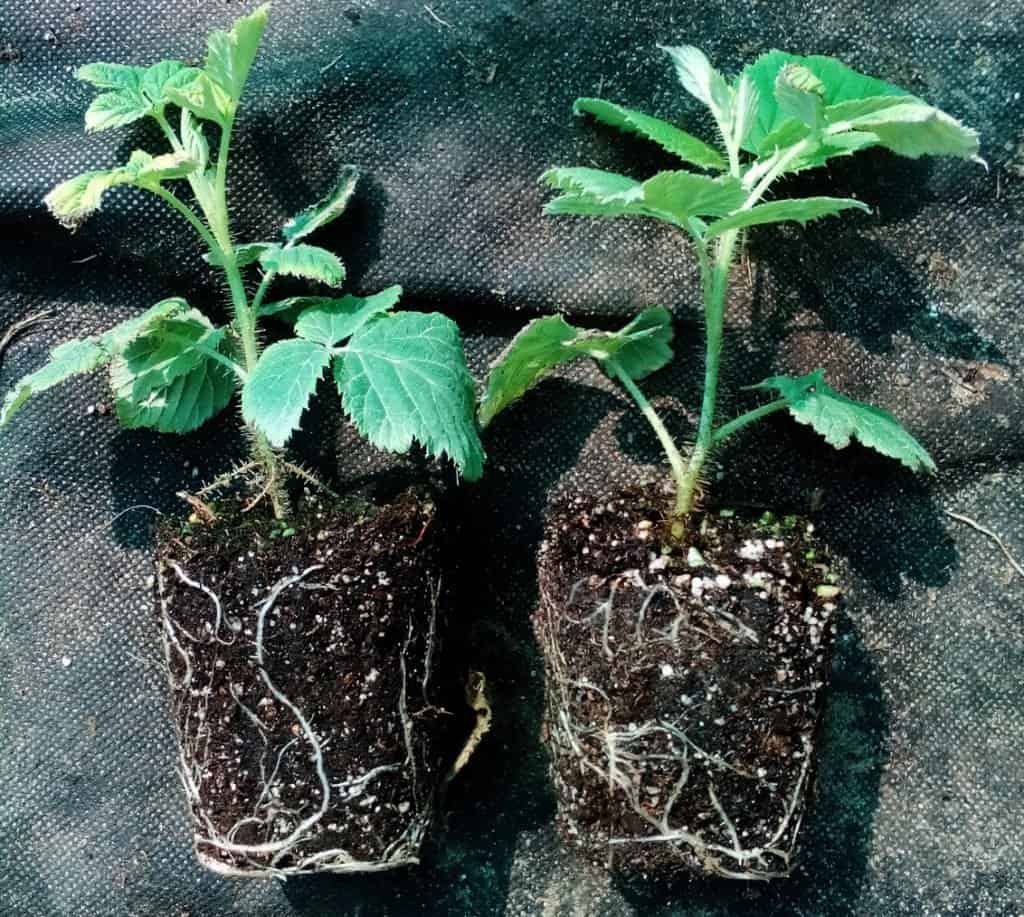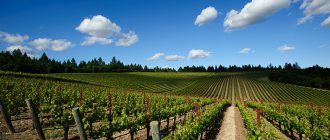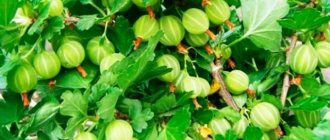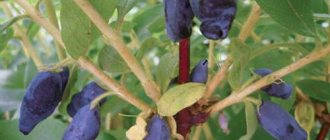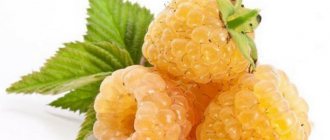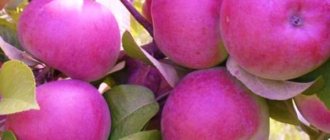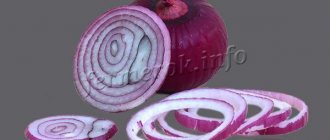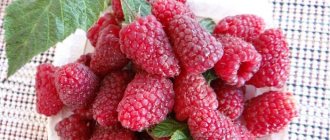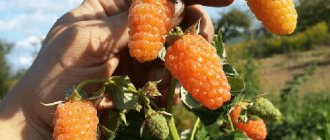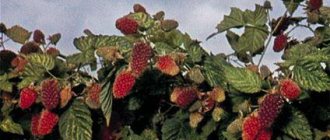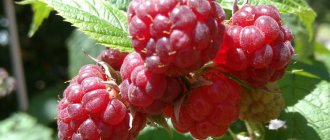Polana is a new raspberry variety. It was bred by Polish breeders, crossing 2 other varieties - Zeva and Heritage. In Russia, she appeared recently and took root quite well. Polana berries are medium-sized, each lilac berry weighs 3-5 grams.
Experienced gardeners say that the taste of the berries is sour. If sunny weather predominates in summer, the berries will be sweet. Therefore, towards the end of ripening, the berries are not so sweet, because sunny days are very rare.
The difference between Polan's raspberries and other varieties is that they begin to bear fruit earlier. Another plus of this variety is its high yield. One bush gives about 4 kilograms of berries.
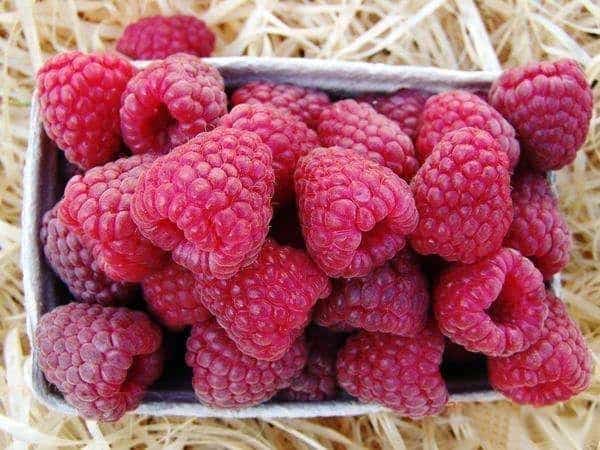
Berries begin to ripen from late July to late October. The berries are located along the bush to the top. In good light, 80% of the berries ripen before the first cold weather. In order for the quality of the fruits to be good, you need to cover the bushes in the evening with light, but dense material.
The climate affects the duration of the ripening of the raspberry fruit. The most suitable climate for Polana is the southwest. This variety of raspberries tolerates winter frosts well, but should not be planted in the northern regions. Polana prefers to grow on black earth and sandy loam soils.
This variety of raspberries is unpretentious and frost-resistant. Polana is able to survive temperatures down to -32 degrees.
Description and characteristics of the variety
Malina Polana is the result of the work of Polish breeders who crossed the varieties Zeva and Heritage. It is unpretentious, grows well in different climatic conditions. Polana bushes are compact, reaching a height of 1.5 m. Stems are erect, strong, covered with short, few thorns. Leaves are alternate, petiolate, consisting of 3-7 ovate leaves. They are dark green on top and white on the back. The shoots can withstand the load of the crop without being attached to the support.
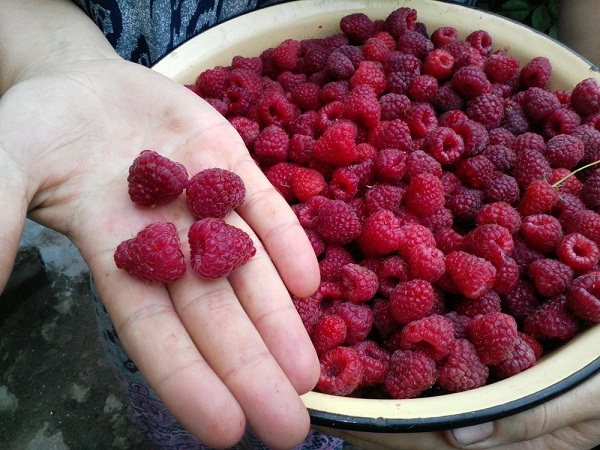

Polan's raspberry flowers are medium-sized, white in color. The berries are characterized by a rounded-conical shape. The drupe is small, of dense consistency. The fruits are large, reaching a weight of 5-6 g. As they ripen, they turn dark red. The berries are juicy, sweet and sour and aromatic. The fewer sunny days, the stronger the sourness is felt. In the autumn, the palatability decreases, because Warm days are rare.
The Polana variety is distinguished by early fruiting and high yield. Ripe berries do not crumble. Fruit branches are formed throughout the entire shoot, even at its top. With proper care, 3-4 kg of berries are harvested from one bush. Thanks to the dense skin, raspberries do not lose their presentation during transportation.
On a note! In one place Polana can be grown up to 14 years old. During such a long period, the berries do not become smaller, and the harvest remains at a height.
When growing berries in a one-year cycle, fruiting begins in the second decade of August and continues until autumn frosts. In the southern regions, in a two-year cycle, the first crop is harvested in June on last year's shoots, and the second - from the end of August on the stems of the current year. Berries ripen even at + 5 ° C.
The origin of the Polana raspberry variety
This variety is considered a novelty, since it appeared relatively recently. Actually, therefore, before growing, you need to find out what the Palana raspberry is and everything about it: about planting, care and possible difficulties.
This crop was bred in the early 90s by Polish breeders. It is a direct relative of the remontant varieties Heritage and Zeva, which are distinguished by high productivity rates, abundant fruiting, which lasts until the onset of cold weather. Therefore, in the description of the Polana raspberry variety (somewhere the names Polyana, Palana may be found), the indicated properties also appear, for which many summer residents choose it for their plots.
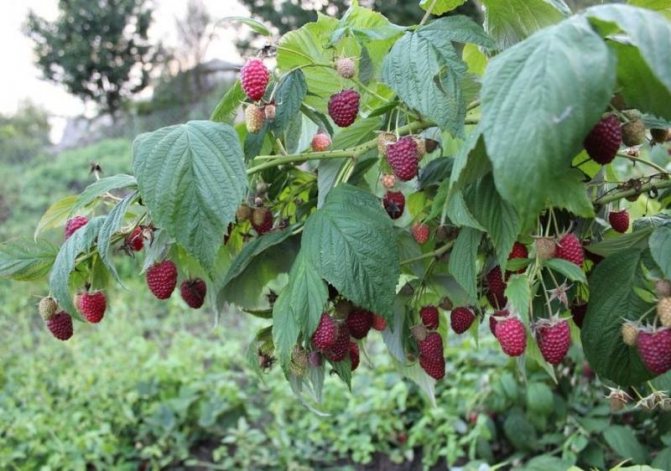

Polana's raspberry brings a bountiful harvest
Advantages and disadvantages
Polana raspberries have many benefits:
- high productivity;
- early fruiting;
- excellent presentation;
- ripe berries do not crumble;
- long fruiting period;
- good transportability and keeping quality of berries;
- frost resistance of the root system;
- immunity to fungal diseases;
- bushes do not need support.
Among the disadvantages of the Polana variety, the following features are distinguished:
- fruits are not sweet enough;
- average winter hardiness of shoots;
- the need for regular removal of root growth;
- low drought resistance.
On a note! Raspberry Polana can withstand temperatures as low as -32 ° C.
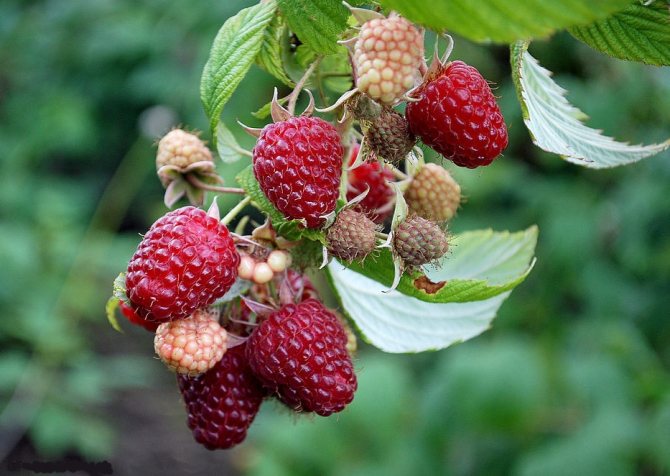

Ripening and harvesting
The berry bears fruit for a long time: the ripening period occurs in early August and lasts until November. Up to 6 kg of ripe and sweet raspberries can be harvested from one adult shrub. This variety practically does not crumble, so you can pick berries without haste, without fear that it will disappear.
The collection of fruits is carried out in the morning or after sunset. If transportation is required, then they should be immediately placed in boxes or containers so that it does not wrinkle.
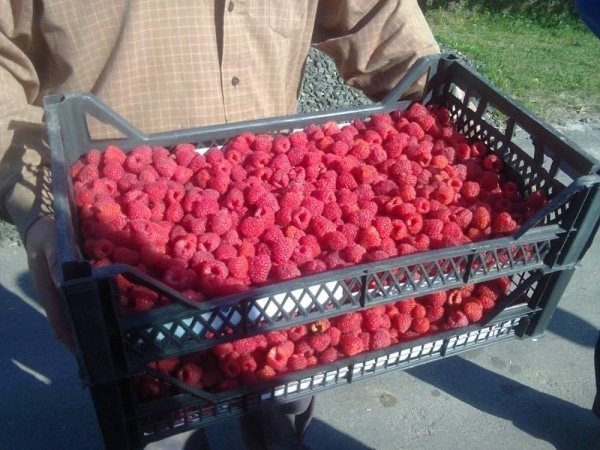

When harvested, the berry is immediately placed in shipping boxes.
As it became clear, Polana's raspberry, due to the peculiarities of planting, care and collection, is the most optimal option in terms of time and costs for people employed at work. You just need to follow a couple of simple rules to get a bountiful harvest of tasty and juicy berries.
Landing features
Polana bushes give a large number of offspring. Therefore, the breeding of the variety is not difficult. Most often, green shoots or cuttings of roots are used as planting material. The roots of the seedling should be flexible, elastic, without damage and dry ends.
Seat selection
It is recommended to grow raspberries in a sunny, windless area. Partial shade is acceptable, but the berries will be less sweet. The variety prefers light, fertile soil with neutral acidity. Clay soil needs to be improved. To do this, during digging, sand, compost or rotted manure are introduced. For 1 m2, 2-4 buckets of organic matter are enough, depending on the state of the earth.
Important! Lime or dolomite flour is added to acidic soil at the rate of 0.5 kg per 1 m2.
Raspberry Polana is a moisture-loving plant, but stagnant water can lead to its death. The root system penetrates 50 cm deep. Therefore, a place with a close location of groundwater is not suitable. Before planting, the site is cleared of weeds, rhizomes of perennial grasses.
Landing dates
It is recommended to plant raspberries of the Polana variety in the fall in order to get the first harvest next year. The best time to plant is from late September to mid-October. Young plants will have time to take root before frost, and with the arrival of heat they will immediately begin to grow. In the middle lane, Polana is planted in spring, but the harvest in the current season is small. The maximum fruiting occurs in 1-2 years after raspberry rooting. Container-grown cuttings can be planted throughout the growing season.
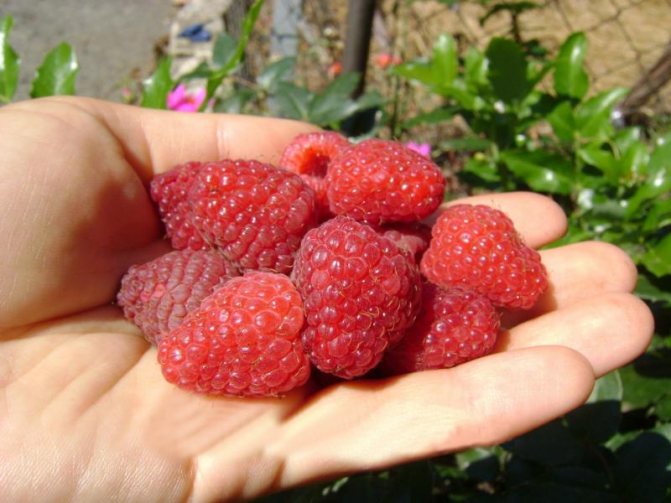

Raspberry planting technique
So that the bushes are evenly illuminated by the sun, the rows are placed in the direction from the north-east side to the south-west. Saplings in a raspberry plant are placed in the following ways:
- The bush method is used when growing raspberries in personal plots.Plants are planted in holes with a diameter of 50 cm and a depth of 35-40 cm, at a distance of 0.75-1 m from each other. Each hole is 1/3 filled with rotted manure, 30 g of superphosphate and 150 g of wood ash are added.
- The tape method is most often used for industrial cultivation of raspberries. Trenches 40 cm deep and 50 cm wide are dug. Branches, small logs, dry foliage and sawdust with a layer of 15 cm are laid at the bottom. Then they are poured abundantly with water and sprinkled with earth. For each running meter of the trench, a mixture is poured, consisting of 16-18 kg of humus, 60 g of superphosphate and 300-500 g of wood ash. Bushes in a row are placed at a distance of 0.3 m.With this density, stripes form faster, full-fledged fruiting occurs earlier.
For any planting method, the row spacing should be 1.5-2 m. Fertilizers are covered with fertile soil extracted during digging a hole or trench. Then the components are gently mixed. Nitrogen-containing top dressing is not added during planting of raspberries, because they prevent rooting.
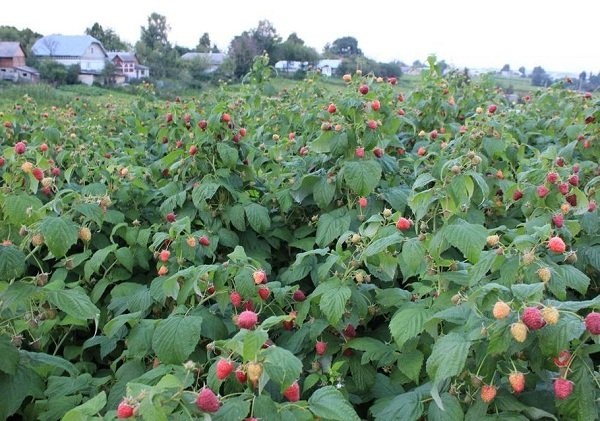

The process of planting seedlings of the Polana variety includes the following stages:
- Before planting raspberries, the roots are immersed in water for 2-4 hours.
- The plant is placed on a mound formed from the soil. The roots are spread and covered with earth. The root collar is not buried. It should be flush with the ground.
- The soil around the seedlings is lightly tamped and watered with warm water at the rate of 10 liters per plant.
- Planting is mulched with humus, compost or sawdust with a layer of 5-10 cm.
Important! After 1-1.5 months after planting, the shoots are cut to ground level.
Suitable region and climate for growing
Malina Polana feels great in central Russia, as well as in the southwestern regions. It grows well in Belarus and in the north-west of Ukraine (in the temperate climate of these territories, raspberries do not ripen in October). The variety is also cultivated in the Crimea (however, without much success).
In arid climates, shrubs need to equip a drip irrigation system, or irrigate more often. The most suitable soils are chernozems and sandy loam soils.
Raspberry care
Raspberry Polana is an unpretentious crop, but for high yields, it needs timely watering, top dressing, correct pruning, regular loosening and weeding.
Watering and loosening
With a moisture deficit, the berries become smaller and lose their elasticity. In the absence of rain, raspberries are watered weekly, spending a bucket of water on the bush. During flowering and fruit setting, 2 buckets of water must be poured under each plant once every 7-10 days. So that the liquid does not spread, earthen sides are erected around the raspberries. Sprinkler irrigation can be used during drought.
The next day after watering or rain, the soil is loosened to a depth of no more than 6-7 cm. During this procedure, weeds are cut. If the soil around the bushes is mulched, it is enough to remove the weeds from the area.
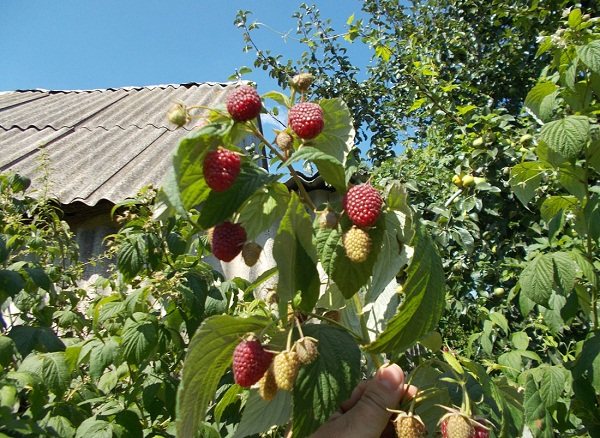

Important! Water raspberries in moderation, because waterlogging of the soil contributes to the development of septoria.
Spring and autumn works
In the spring, when the snow melts, it is recommended to cover the plantings of Polana raspberries with white agrofibre. Such a measure will help protect young shoots from frost. They will grow faster and give an earlier harvest. The shelter is removed when the shoots reach a length of 5-7 cm. 4-5 strong shoots are left on each bush, cutting off the extra ones. At the beginning of the growing season, the plants are fed with mullein infusion. It is diluted with water in a ratio of 1:10. When using poultry droppings, the ratio is 1:20. For 1 m2 of raspberries, 10 liters of working solution are required.
All root growth should be removed regularly so that it does not take up the nutrients necessary for the formation of numerous fruit branches. Also, thinning plantings will prevent the development of fungal diseases.During the period of flowering and the formation of fruits, Polana's raspberries are useful to feed with slurry or infusion of fermented herbs. The fertilizer is diluted with water in a ratio of 1:10.
When the entire crop is harvested, you should remove the fallen leaves and old mulch. If the autumn period is dry, 3-4 buckets of water are poured under each bush. During the digging of row spacings, 150 g of wood ash are introduced under each bush. The soil around the raspberries is mulched with compost or rotted manure with a layer of 8-10 cm.
When cultivating Polana in a one-year cycle, all stems are cut out at the base, and when growing remontant raspberries in a two-year cycle, only woody, last year's shoots are removed. On each bush, 5-7 strong stems of the current year are chosen, and the rest are cut at the root.
On a note! Raspberries are cut off only after the onset of the first frost, when the sap flow stops. If you leave hemp above the surface of the ground with a height of more than 5 cm, raspberries will lose the property of repair.
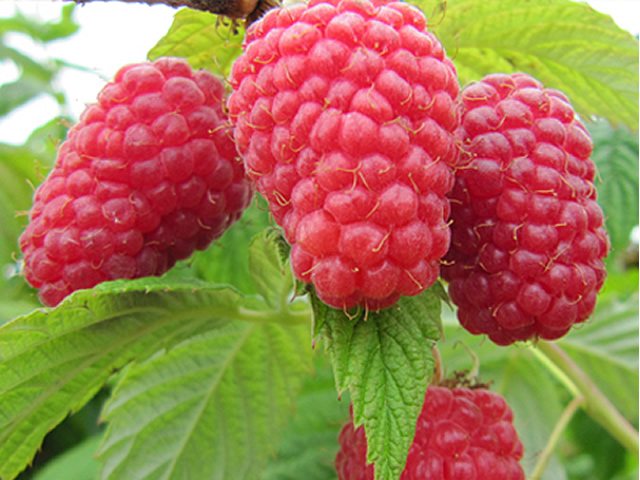

Polana is resistant to low temperatures and does not need a special shelter for the winter. There is enough snow cover to protect the root system from frost.
Fertilizers and mulch
Mulching should be done in northern regions where winters are quite cold. Since a layer of mulch will protect the raspberry bush from freezing. However, it is imperative to fertilize the plant in order to obtain high yields.
There are several rules for feeding Polan raspberries:
- Organic fertilizers are applied first. This happens after the snow melts. It is recommended to apply them in liquid form.
- Further, during the period of active growth, top dressing is done again. But minerals are already being used. They must also be used in liquid form according to the instructions.
- Minerals are reintroduced during the flowering period.
- The last time they are required is during the setting of the berries.
- Organic fertilizers must be added three weeks before the cold weather. Preferably in solid form. Then the released ammonia will warm the raspberry root system during the winter.
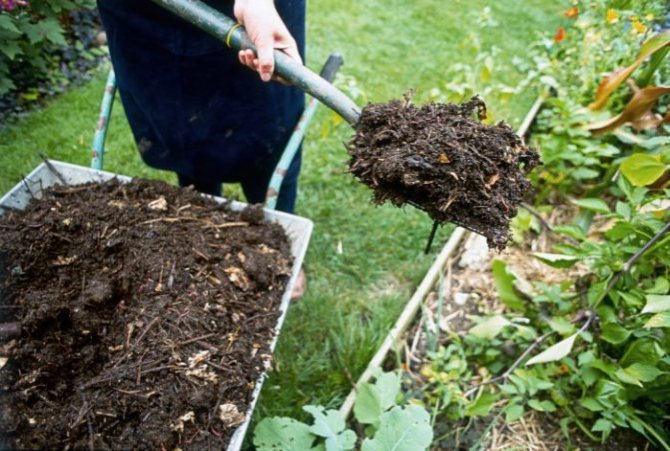

Reference. The lack of fertilizers is not critical, the culture will not die. However, growth will slow down dramatically and yields will drop sharply. Therefore, gardeners are careful to ensure that there is always enough nutrients in the soil. Mineral fertilizers should be based on potassium, magnesium, phosphorus and superphosphate.
Diseases and pests
Failure to comply with the rules of agricultural technology can lead to the occurrence of fungal diseases. For example, thickening of plantings as a result of the lack of pruning leads to the development of gray rot, anthracnose and septoria. In order to prevent fungal diseases, bushes in the spring and after harvesting the fruits are sprayed with Bordeaux liquid or copper oxychloride. The affected plants are also treated with these drugs.
The greatest danger for the Polana variety is represented by viral diseases, the pathogens of which enter the site along with low-quality planting material. Often, raspberries are affected by overgrowth and mosaics. Such bushes are dug up with a clod of earth and burned.
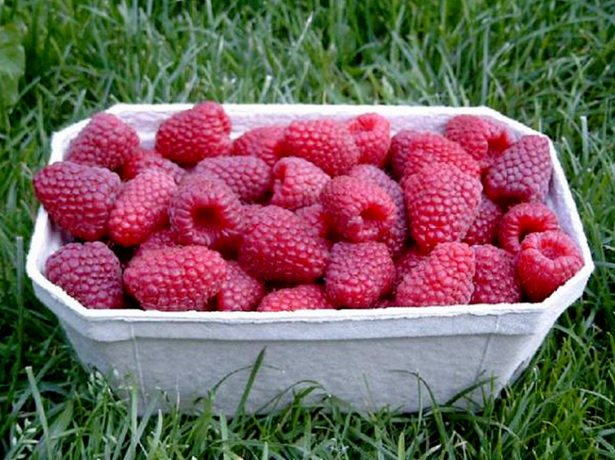

The viral infection can be spread by ticks and aphids that settle on young shoots. Insects are destroyed with Fitoverm, Akarin, Fitosporin or colloidal sulfur solution. Neighboring plants are also treated. When the bushes are affected by raspberry gall midge, weevil or stem fly, the bushes are treated with Aktellik before flowering.
Testimonials
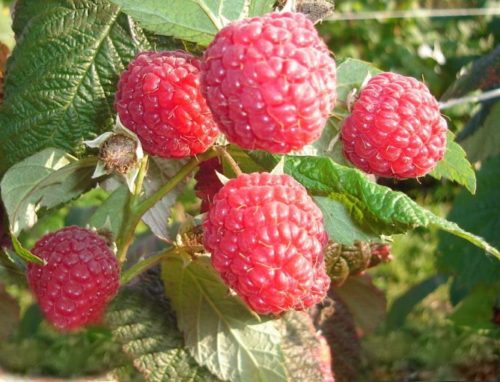

Anna M: I really like this variety. I will not say that the taste is divine, but the high yield pleases.
Cyril B: Malina Polana was a godsend. Now I am not surprised when they call it a find for lazy people. Caring for her is pretty simple. And most importantly - maximum impact!
Ivan G: A very good variety of raspberries! Not picky and easy to care for. I like that it is not difficult to transport and store berries.
Vladimir R: Recently I planted Polana on my site. I liked the taste of the berries from the first harvest.As some write, I did not notice any acid. Therefore, I am satisfied with the selected variety and will continue to propagate Polana.
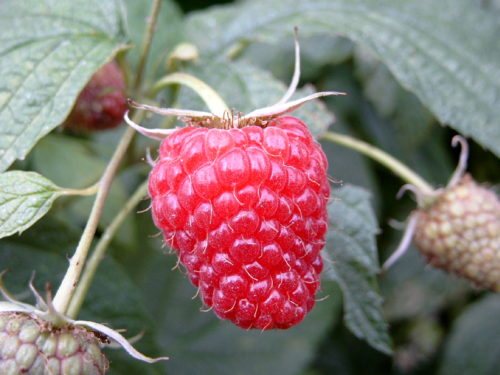

Pruning and garter
This variety of raspberries does not require a garter. However, some gardeners do it out of habit. The stems are strong enough to grow without additional help. However, it is imperative to prune.
Here's how it works:
- All dry shoots are removed first.
- Then the branches are examined for the presence of traces of various diseases. They differ in color or have characteristic bulges.
- Finally, you need to shorten the skeletal branches to one meter in height. It is also worth thinning the bushes to get larger shoots.
All branches removed after pruning are subject to burning. If placed in a humus pit, fertilizers can be contagious. Since raspberry shoots often contain pathogens. When they get into the soil with humus, they infect other crops.
